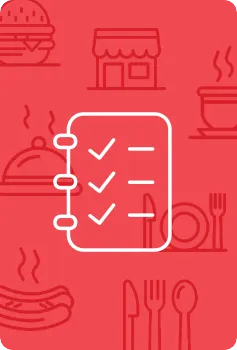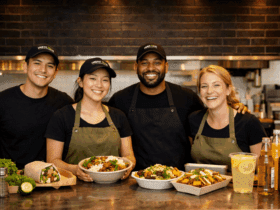Although managing a successful restaurant can be a gratifying effort, there are many difficulties involved. This is especially true when it comes to controlling running expenditures and expenses. The average annual expenses for all sole proprietorship restaurants in the U.S. was $125,167. Keeping a profit is crucial in a highly competitive sector like food service. Fortunately, there are several efficient tactics that restaurant operators may use to reduce operational costs and increase revenue without sacrificing the caliber of the food or service.

Restaurant Monthly Sales Template
Optimize your restaurant’s financials with our Monthly Sales Template! Track and analyze sales efficiently, enable precise adjustments, and maintain transparent communication within your team.
Let's Take A Look At Ten tried-and-true ways to save costs while still running a successful restaurant.
1. Effective Inventory Management:
Inventory is one of the biggest costs for restaurants. Adopting an effective inventory management system can assist in reducing waste, stop food from spoiling, and avoid placing excessive orders. To keep expenses in check, keep an eye on stock levels, use FIFO (First In, First Out) procedures, and bargain good terms with suppliers.
2. Optimally Schedule Staff:
The bottom line of a restaurant can be considerably impacted by labor expenditures. Analyze customer traffic statistics thoroughly to improve staffing. Create flexible schedules that correspond with peak times using technology and software and avoid overstaffing during slower times. All of this can hep reduce operational expenses.
3. Energy Conservation:
Energy conservation lowers utility costs while also benefiting the environment. The use of LED lighting, the purchase of energy-efficient equipment, and staff training on the need to turn off lights and equipment when not in use. Additionally, to efficiently control heating and cooling, think about using programmable thermostats.
Must Read: Exploring The Diversity: A Guide To Different Types Of Restaurants
4. Engineering for Menus

Another way to reduce operational costs is by examining your menu to see which foods are most and least profitable. Consider deleting low-margin items that don’t make a big contribution to revenue and concentrate on promoting high-margin products. Update your menu frequently with things that are popular with clients and have a higher profit margin, such as seasonal or trending foods.
5. Establishing Supplier Ties:
This will help you bargain better prices for large purchases or long-term contracts. To make sure you are obtaining the greatest costs on ingredients and other supplies, compare pricing from several sellers frequently.
6. Embrace Technology:
Use technology to automate processes and lessen human error. Use a point-of-sale (POS) system to automate invoicing procedures, keep track of sales and inventory, and manage reservations effectively thereby reducing operational costs. Through online ordering and reward programs, digital solutions can also increase customer involvement.
7. Reduce Food Waste:
Food waste has an influence on prices as well as the environment. Train workers to handle food with care, offer programs to creatively repurpose leftovers, and use proper storage methods. To contribute extra food, think about collaborating with nearby food banks or charities.
8. Cross-Train Employees:
Cross-training workers make personnel more flexible and guarantees that tasks are completed even in times of staff shortages. Multiple-skilled workers may fill many responsibilities, which eliminates the need for additional employees.
9. Implement Cost-control Measures:
Reduction in operational costs can be achieved by routinely reviewing financial records and performance information to locate cost-saving opportunities. Establish precise financial objectives and impose cost-control policies throughout your restaurant.
10. Marketing and Online Presence:
Make targeted marketing investments to draw in new clients and hold onto current ones. Promote deals, events, and offers on your restaurant’s website and on social media by interacting with your clientele there.
In conclusion, careful planning, effective operations and wise decision-making are necessary for managing operating costs and expenses in a restaurant. Restaurant operators may build a more financially stable business while still providing outstanding dining experiences to their devoted customers by putting these ten techniques into practice. In this constantly changing market, always be receptive to fresh concepts and technological advancements that can improve your restaurant’s productivity and profitability.
Must Read: An Insightful Guide on Investing in Restaurant Technology










Leave a Reply